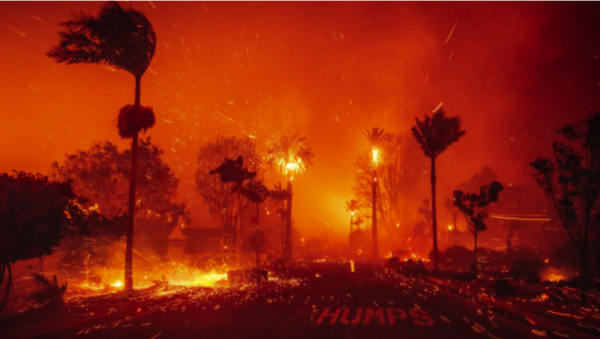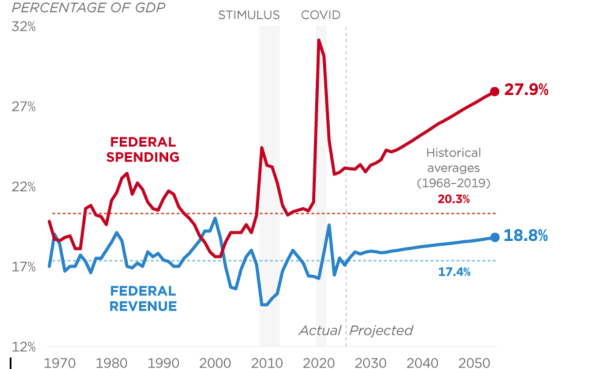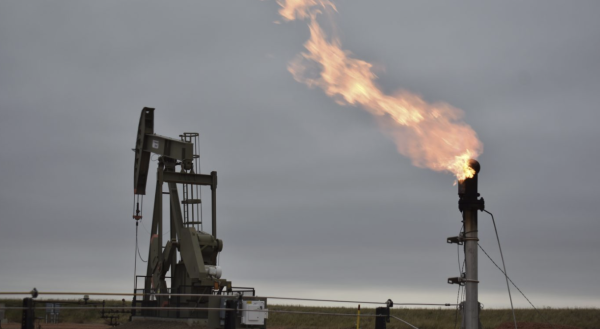Fires continue to burn in the Amazon Rainforest
Alongside millions of others, students and faculty at Westminster remained shocked by the news circulating about the Amazon Rainforest fires. The Amazon Rainforest, what many consider to be the “lungs of the world,” is slowly being reduced to ash and smoke. It is difficult to discern what is causing these billowing flames to devour the Amazon’s lush ecosystem; there is much debate over the cause of the fires, along with the ways people are responding to the issue. Westminster students and faculty provide a variety of insights and observations on the issue and how it has been received by the public.
Forest fires are recorded in the Amazon every year as a result of the dry season; however, due to a variety of factors, the severity of the fires reached a record high this year. Data suggests that the number of fires burning throughout the Amazon this year trumps last year’s number by over 50 percent. There’s no disagreement that the current fires were at least partially caused by humans. Brazilian farmers have utilized controlled fires for years as a method of clearing space for crops. Jair Bolsonaro (the current president of Brazil) is facing international condemnation for allowing deforestation practices get out of hand, thus causing unprecedented forest fires in the Amazon. It’s easy for many people to designate a certain cause as the sole root of the issue; however, forest fires are a complicated phenomenon, and a problem that grows more and more pressing by the day as the flames continue to blaze on.
AP Environmental Science teacher Miranda Wilson breaks down the science behind the fires, along with the environmental consequences they yield. Wilson explained that the Brazilian government played a role in the controversy of the fires.
“Bolsonaro is very pro-agriculture,” said Wilson. “A lot of people see that as an opportunity for deforestation and expansion of agricultural lands.”
According to Wilson, the current fires are the consequence of both deforestation events and farmers clearing land for agriculture. While agriculture and a surplus of land is obviously beneficial for the Brazilian economy, Wilson emphasizes the long-term negative effects the fires could have on the environment.
“Deforestation is a huge issue in terms of climate change,” said Wilson. “[It] takes away forests that can remove carbon dioxide from the atmosphere. Burning also creates carbon dioxide and carbon monoxide.”
Carbon dioxide and carbon monoxide are both greenhouse gases that become trapped inside the earth’s atmosphere when emitted, contributing to global warming.
“The more deforestation we have in general, regardless of whether it’s caused by a fire or not, is going to harm the global climate,” said Wilson.
Global climate phenomenon often take a long time for scientists to understand because the data cannot always be properly understood as soon as it’s first received.
“We’re going to have to wait a little while for more satellite data to be analyzed to see how the rest of the year is going to go,” said Wilson.
The inferno in the Amazon, naturally, has elicited a media storm almost as widespread as the fires themselves. Wilson shared her perspective on the media’s response to the event.
“Anything that can draw public attention to environmental issues is a good thing,” said Wilson.
Senior Roshan Vemuri, co-leader of Westminster’s ECO club, agrees with this perspective.
“It’s definitely good that people are seeing what’s happening,” said Vemuri. “I think there’s a general lack of awareness of how much the things people do can affect the environment.”
Though many view the publicity as a good thing, some believe that such heavy coverage of the current fires could potentially trivialize other environmental issues that don’t receive as much publicity.
“Things like this are happening almost every single day, and they’re not getting any press at all,” said Vemuri.
Vemuri believes that publicity is important; however, there are many more climate-related issues around the world than are being reported. For example, if the media doesn’t have a similar reaction next year to forest fires in the Amazon, it is possible that people would make the assumption that it’s no longer a pressing issue. Vemuri thinks it’s important to remember that threats to the environment are taking place all the time, even when they don’t receive much publicity.
“Things like this are happening every year, every day,” said Vemuri. “Not just when stories appear in the news.”
Vemuri also believes that politics may play a role in the news coverage of the event.
“I think that it’s getting a lot of attention now because of the political climate in the country,” said Vemuri. “[Politics and environmental issues] are definitely two separate issues that need to be solved.”
Senior Cole Seagroves recognizes the importance of raising awareness about the fires as well, but after researching the issue, he observed something interesting about the media’s response to the fires.
“Two of the most widely shared pictures were actually not of the current fires,” said Seagroves.
One of these images, Seagroves pointed out, gained immense popularity after being included in an Instagram post from well-known American actor Leonardo DiCaprio. The image was reposted by multiple other high-profile individuals, including French president Emanuel Macron. The picture that DiCaprio posted turned out to be a stock photo taken in 2003, and another extremely widespread photo dated all the way back to 1989. After learning of the extensive use of inaccurate pictures in social media responses to the fires, Seagroves suggests that people should be more careful about posting pictures that accurately represent the issue at hand.
If your point of a picture is to get the public to [become] alert about [an issue], you should probably just get a real picture,” said Seagroves.
The issue of forest fires in the Amazon is certainly complex and multi-faceted, and one can only hope that people around the world contribute to rectifying this dilemma.




